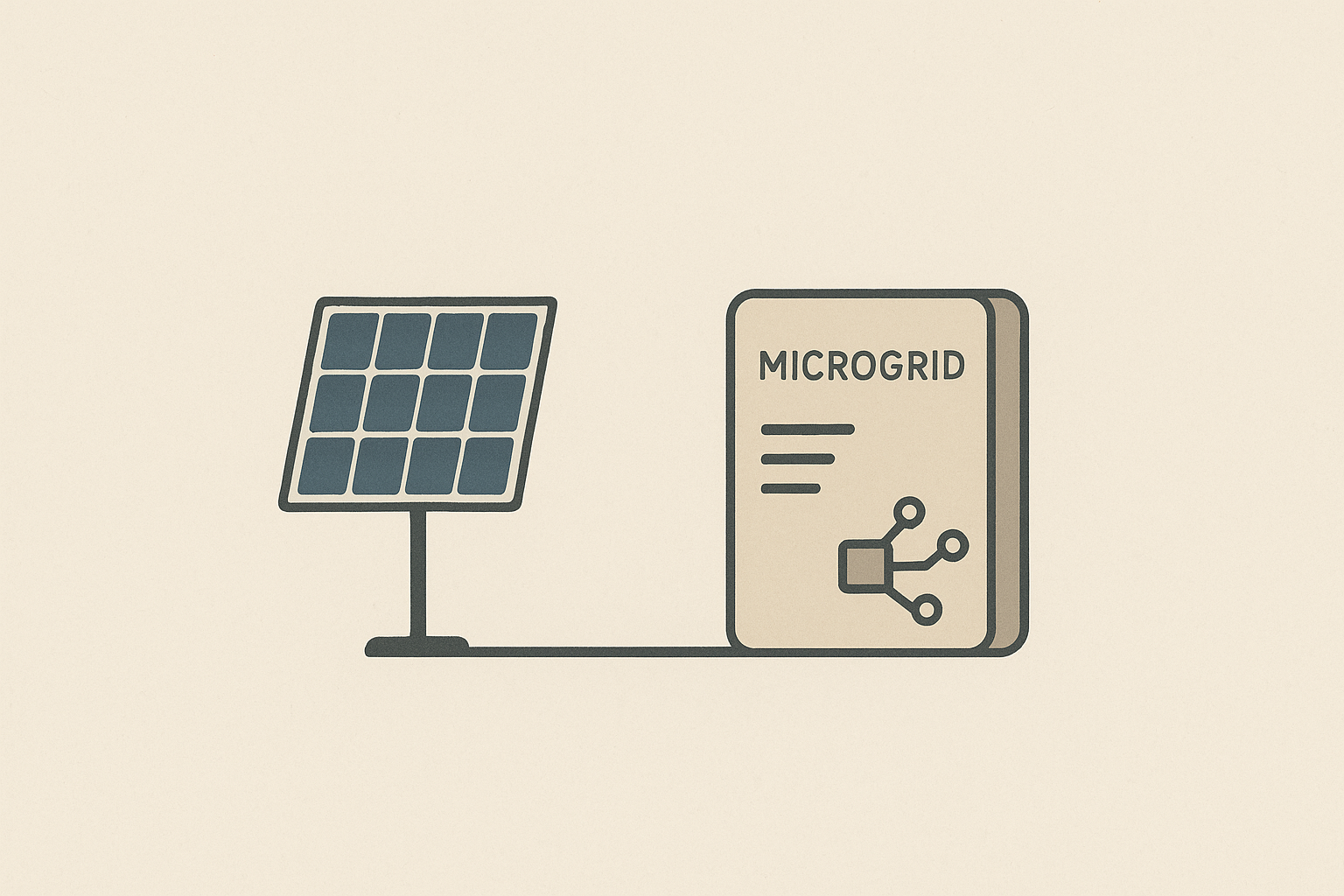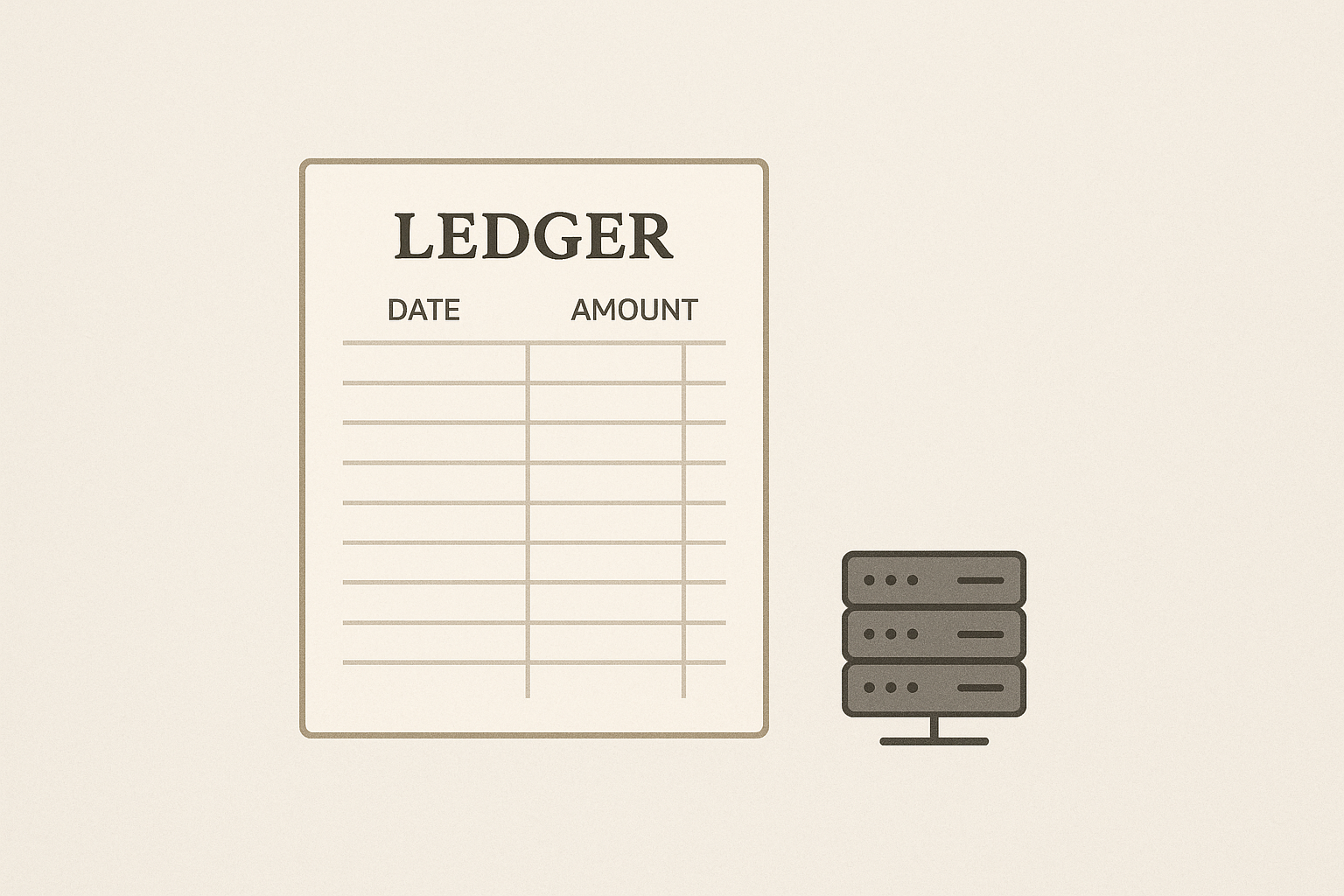Offline-First, Privacy-Preserving Data Platforms for Rural Renewables and Sustainable Farming
A practical guide to building resilient, offline-first data systems and sustainable business models for rural renewables and farming.

The Evergreen Challenge
Rural renewable energy projects and sustainable farms generate valuable time-series, event and telemetry data. That data enables optimisation of generation, storage, water and nutrient management and local marketplaces. Yet most rural deployments face three persistent constraints: intermittent connectivity, strict privacy and limited local compute and power capacity. These constraints are not temporary; they represent the operating environment for decades in many communities. The challenge is to create data platforms that work reliably offline, protect stakeholders data and allow long-term commercial sustainability without assuming constant cloud connectivity.
This briefing delivers two complementary, future-proof solutions: a technical architecture for resilient, offline-first, privacy-preserving edge-to-cloud platforms; and a business and operational model that converts such platforms into sustainable products and community-aligned revenue streams. Each solution contains step-by-step implementation guidance, and the technical option includes a substantial, practical code example for a gateway that buffers, compresses and synchronises sensor data safely when connectivity returns.
Did You Know?
Even in well-connected countries, rural broadband availability and bandwidth can lag urban areas, making offline-first system design essential for long-term reliability and inclusion. See official guidance from Ofgem on the regulatory context for network-connected energy systems.
Why Offline-First and Privacy Matter
- Offline-first ensures systems continue to operate predictably when link quality drops, which prevents data loss and keeps control loops functioning locally.
- Privacy-preserving architectures build trust with farmers, co-operatives and community energy projects; they reduce legal and reputational risk as data governance regimes evolve.
- Energy and compute constraints in the field demand compact, efficient data formats and local pre-processing to reduce transmission costs and carbon footprint.
Solution A — Technical Architecture: Edge-First, CRDT-Backed Sync with Compact Telemetry
Overview: design a three-layer architecture: device layer (sensors and controllers), gateway layer (local aggregation, offline storage, local inference and secure sync) and cloud layer (durable storage, analytics, model training and marketplace APIs). The gateway is the critical piece; it must be able to operate autonomously, enforce privacy policies, and synchronise deterministically with the cloud using Conflict-free Replicated Data Types (CRDTs) or operational transform style approaches.
Architecture Principles
- Local autonomy: critical control logic runs on the gateway so operations continue if the cloud is unavailable.
- Compact, typed data frames: prefer binary formats such as CBOR or Protocol Buffers for telemetry to reduce bandwidth and parsing overhead.
- Idempotent sync: design for repeated uploads and partial transfers without duplication.
- Deterministic conflict resolution: use CRDTs for state that can be edited both locally and remotely, for example device configuration, schedules and aggregated counters.
- Privacy by design: keep raw data local when possible; expose only aggregated or anonymised data to cloud services unless explicit consent exists.
Step-by-step Implementation Plan
- Define data contract and schemas, using Protobuf or CBOR for sensor readings. Include timestamps, local sequence numbers and provenance metadata.
- Implement a local storage layer on the gateway using a small, robust embedded database such as SQLite or LMDB. Partition data into hot (recent) and cold (historical) buckets.
- Build a compact telemetry pipeline: sensors -> binary framing -> local validation -> local aggregation and compression (chunking with zstd) -> write to durable queue.
- Choose a sync protocol. For simple reliable delivery, use MQTT or HTTPS with resumable uploads. For stateful synchronisation, prefer a CRDT library and a pull/push model that reconciles remote and local state deterministically.
- Implement access controls and privacy filters on the gateway. Provide a local admin interface for data sharing consent and retention policies.
- Build cloud endpoints that accept compact frames, verify provenance, and perform server-side deduplication. Provide aggregated views and APIs for third parties under strict permissioning.
Substantial Code Example: Gateway Sync Agent
The following example is a compact Python gateway agent. It shows how to buffer sensor data in SQLite, compress frames and perform resumable upload to an HTTP endpoint. The code uses standard libraries plus requests and zstandard. This is a starting point; substitute CBOR or Protobuf encoders and a CRDT library for stateful needs.
#!/usr/bin/env python3
# gateway_agent.py
# Minimal offline-first gateway: buffer sensor frames, compress, resumable upload
import sqlite3
import json
import time
import threading
import requests
import zstandard as zstd
DB_PATH = '/data/gateway.db'
UPLOAD_URL = 'https://cloud.example.com/api/v1/gateway/upload'
DEVICE_ID = 'gateway-001'
CHUNK_SIZE = 32 * 1024 # 32KB
# Initialise DB
def init_db():
conn = sqlite3.connect(DB_PATH, check_same_thread=False)
c = conn.cursor()
c.execute('''CREATE TABLE IF NOT EXISTS frames (
id INTEGER PRIMARY KEY AUTOINCREMENT,
ts INTEGER NOT NULL,
seq INTEGER NOT NULL,
payload BLOB NOT NULL,
uploaded INTEGER DEFAULT 0
)''')
conn.commit()
return conn
conn = init_db()
lock = threading.Lock()
# Simulated sensor writer
def write_sensor_frame(seq, data_dict):
payload = json.dumps(data_dict).encode('utf-8')
ts = int(time.time())
with lock:
c = conn.cursor()
c.execute('INSERT INTO frames (ts, seq, payload) VALUES (?, ?, ?)', (ts, seq, payload))
conn.commit()
# Pack and compress a batch
def pack_batch(rows):
batch = []
for r in rows:
batch.append({'id': r[0], 'ts': r[1], 'seq': r[2], 'payload': json.loads(r[3])})
raw = json.dumps({'device_id': DEVICE_ID, 'batch': batch}).encode('utf-8')
cctx = zstd.ZstdCompressor(level=3)
compressed = cctx.compress(raw)
return compressed
# Upload loop
def upload_loop():
while True:
try:
with lock:
c = conn.cursor()
c.execute('SELECT id, ts, seq, payload FROM frames WHERE uploaded=0 ORDER BY id LIMIT 100')
rows = c.fetchall()
if not rows:
time.sleep(5)
continue
payload = pack_batch(rows)
headers = {'Content-Encoding': 'zstd', 'Content-Type': 'application/json'}
# Resumable upload: support server returning accepted ids
r = requests.post(UPLOAD_URL, data=payload, headers=headers, timeout=30)
if r.status_code == 200:
resp = r.json()
accepted = resp.get('accepted_ids', [])
with lock:
c = conn.cursor()
for idv in accepted:
c.execute('UPDATE frames SET uploaded=1 WHERE id=?', (idv,))
conn.commit()
else:
time.sleep(10)
except Exception as e:
# Backoff on errors
time.sleep(10)
if __name__ == '__main__':
# Start upload thread
t = threading.Thread(target=upload_loop, daemon=True)
t.start()
seq = 0
# Simulated sensor loop
try:
while True:
seq += 1
sample = {'temperature': 20 + (seq % 5), 'energy_kwh': 0.1 * (seq % 10)}
write_sensor_frame(seq, sample)
time.sleep(1)
except KeyboardInterrupt:
pass
Notes and next steps for production:
- Replace JSON with CBOR or Protobuf to save bandwidth.
- Include local encryption for stored frames and mutual TLS for uploads.
- For state sync, integrate a CRDT library for Python or implement vector clocks for deterministic merges.
- Implement an admin endpoint on the gateway to configure retention, consent and selective sharing.
Pro Tip: Keep the gateway simple, observable and crash-resilient. Use file-backed queues and ensure the agent can recover mid-upload without data loss.
Operational Considerations
- Monitor local storage utilisation and implement eviction policies: compress older data and move to cold storage.
- Expose a concise audit log for all data shared to the cloud to support transparency with data owners.
- Enable staged upgrades: rolling updates that preserve local queues and migrate schema safely.
Solution B — Business and Operational Framework: Community-First Monetisation
Technical resilience must pair with an operational and commercial model that aligns incentives across stakeholders: farmers, community energy projects, local co-operatives and utilities. The approach below focuses on durable revenue, low churn and social legitimacy.
Principles
- Value-first monetisation: charge for outcomes and insights rather than raw telemetry. Users pay for saved water, reduced energy costs or predictive maintenance alerts.
- Data co-operatives: enable communities to own and govern aggregated datasets; the platform provides infrastructure and a transparent revenue share.
- Hybrid funding: combine subscription revenue with upfront installation fees, service agreements and grant funding to bridge early adoption gaps.
Step-by-step Commercial Blueprint
- Productise outcomes: identify 2 to 3 measurable value propositions per customer type, for example 10% reduction in irrigation water via schedule optimisation, or 5% improved battery lifetime on a microgrid.
- Pricing tiers: create a base tier for local autonomy (gateway only, no cloud) for small holdings; a scale tier with cloud analytics and marketplace access; an enterprise tier for utilities and aggregators with SLA-backed services.
- Data governance and consent flows: implement straightforward consent UX on the gateway and in the admin portal; offer explicit options for anonymised market data sharing with revenue split back to contributors.
- Sales and distribution: partner with local equipment vendors and agricultural advisers who can integrate your service into their offering and handle installation and basic support.
- Finance model: forecast a blended revenue model — initial hardware/installation recoveries, recurring SaaS/subscription, and marketplace transaction fees. Include conservative assumptions for churn and connectivity-driven support costs.
- Escalation and support: offer a managed service for critical infrastructure with higher SLAs; provide remote diagnostics and local field partner networks for hardware faults.
Example Financial Blueprint (Simplified)
- One-off hardware + installation: GBP 300 per site
- Monthly subscription: GBP 15 for base, GBP 50 for cloud analytics
- Marketplace revenue: 5% transaction fee on energy or produce sales
Assume 1,000 sites: initial hardware revenue GBP 300,000, ARR from subscriptions (50% base, 50% scale) approximately GBP 330,000, plus incremental marketplace fees as adoption grows. This blended approach reduces sensitivity to connectivity variability and spreads revenue across goods and services that are valuable irrespective of always-on cloud features.
Q&A: If connectivity is unreliable, how do you justify subscription fees? Answer: design subscription tiers so that local autonomy delivers baseline value; cloud features are 'value-add' and optional, which lowers acquisition friction.
Comparing the Solutions and When to Use Each
The technical architecture is necessary for all deployments: you must be resilient to intermittent connectivity and local privacy expectations. The business framework is layered on top; the precise monetisation mix depends on the customer: individual farms, community energy projects and utilities each require different commitments and SLAs.
- Small farms: prioritise a low-cost gateway, offline automation, and an affordable base subscription; monetise via periodic maintenance and optional analytics upgrades.
- Community energy co-operatives: focus on data co-operative governance and revenue sharing; monetise with marketplace fees and premium dashboards for trading.
- Utilities and aggregators: deliver high-SLA managed services and secure data feeds for grid integration; monetise via enterprise contracts and data licensing.
Privacy, Compliance and Trust
Build in consent by default, keep raw telemetry local where possible and provide clear, machine-readable policies for data exports. Use cryptographic provenance markers on data, and provide straightforward audit logs that stakeholders can inspect. These practices reduce regulatory risk and increase long-term adoption.
Warning: Over-centralising raw farm data can create a single point of failure for privacy and expose you to regulatory and reputational risk. Design for decentralised control from day one.
Implementation Checklist
- Define schemas for telemetry and configuration, prefer Protobuf/CBOR
- Choose gateway hardware with adequate flash and a power-efficient CPU
- Implement local storage and retention policies
- Provide a simple local UI for consent and configuration
- Design sync protocol with idempotency and resumable uploads
- Offer at least two monetisation tiers and involve local partners for distribution
Integration Note: Local Analytics and Edge ML
Local models for anomaly detection and scheduling will be important; keep models compact and energy-efficient and update them through carefully versioned, bandwidth-aware deployments. If you want to learn more about designing low-power models and systems for local deployment, see the discussion in Energy-Efficient Edge ML: Designing Ultra-Low-Power Models and Systems which complements this platform-focused briefing.
Operational Playbook for First 12 Months
- Pilot (0-3 months): Deploy 10–30 gateways in representative sites. Validate storage, sync and privacy flows. Iterate consent UX.
- Localise and partner (3-6 months): Onboard local installers and advisers. Integrate payments or marketplace connectors. Launch a community data-cooperative trial.
- Scale (6-12 months): Harden cloud endpoints, add enterprise features and create a support tier. Start merchant partnerships for marketplace listings.
Metrics That Matter
- Data delivery rate: fraction of frames successfully uploaded within 24 hours.
- Local uptime: percent time gateway performs control functions without cloud.
- Consent adoption: percent of users who opt into anonymised data sharing.
- Value realisation: average reduction in energy/water use attributed to the platform.
Evening Actionables
- Define three core telemetry message types for your product and specify Protobuf/CBOR schemas.
- Build the gateway buffer prototype using the provided Python agent, replace JSON with CBOR and add local encryption.
- Draft a simple consent UX for the gateway admin panel that lists data types with toggleable sharing options.
- Set up a pilot budget with hardware, installation and three months of support; recruit local partners.
- Create a simple financial model with upfront hardware revenue, two subscription tiers and marketplace fee assumptions.
Use the code snippet above as a minimum viable implementation for offline buffering and resumable upload. Iterate toward CRDT-backed state sync and encrypted storage for production systems. This architecture and business model are durable; they do not rely on particular vendor APIs or transient market trends, and they are designed to remain useful as connectivity improves and regulation evolves.





Comments ()